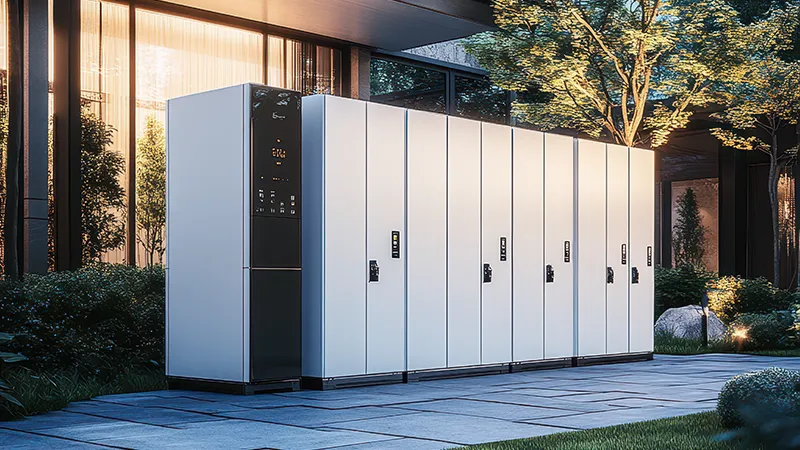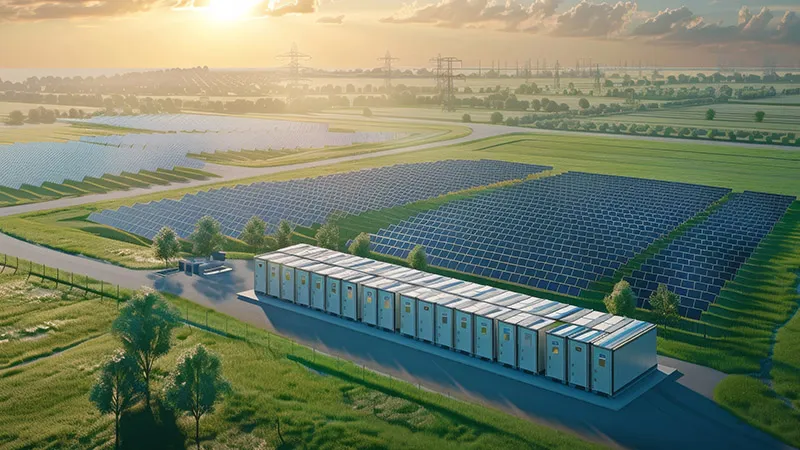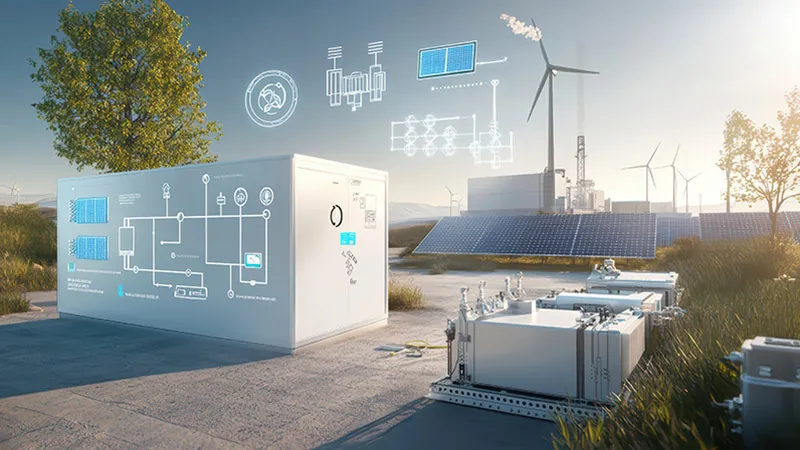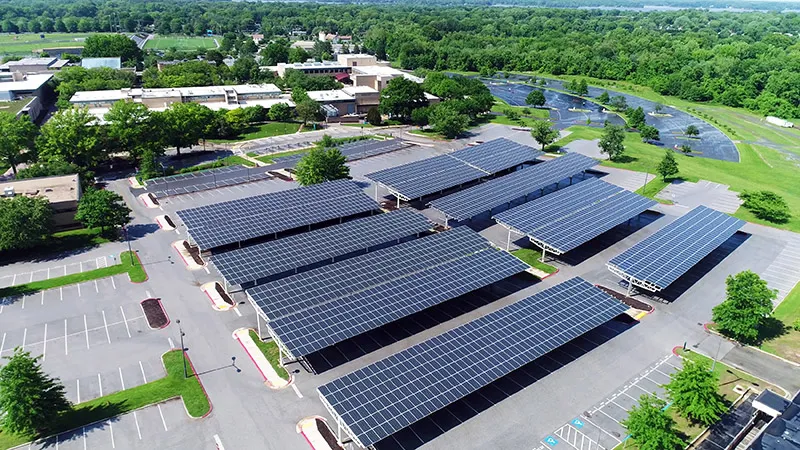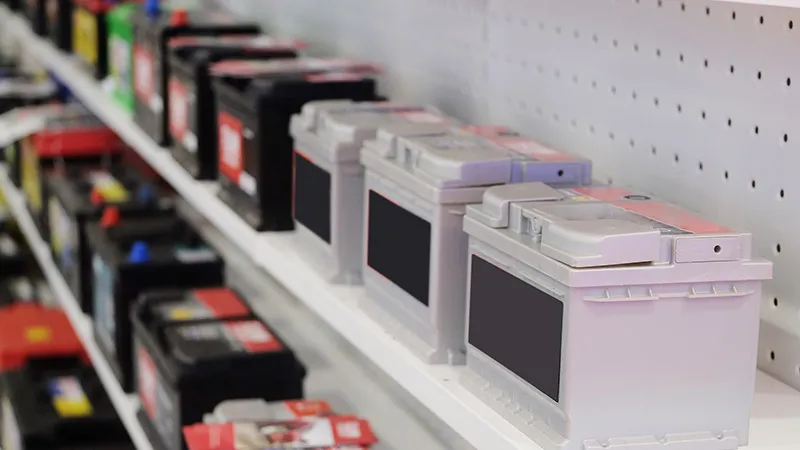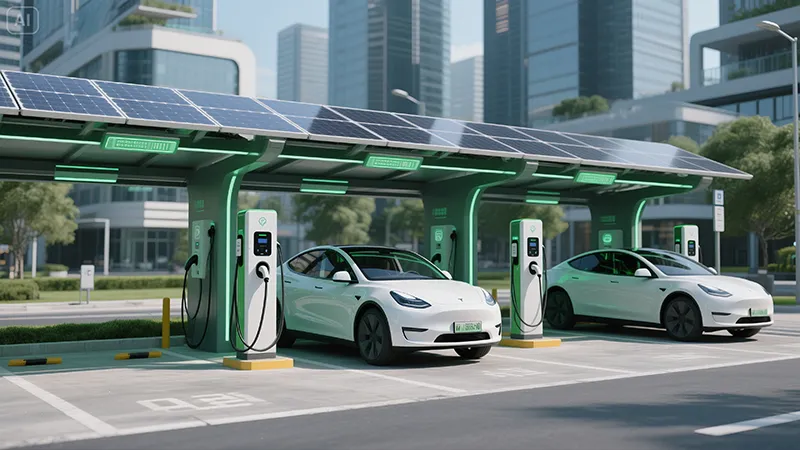Various types of battery-based energy systems are available today. These use different storage chemistries and offer varying benefits. For a complete overview of the BESS types and their best applications, continue reading below. We have their chemistries, advantages, and uses explained.
What is a Battery Energy Storage System?
A battery energy storage system, BESS, is any setup that allows you to capture electrical energy, store it in a battery or batteries, and release it later when you need it. Its size ranges from small units for home use to large BESS setups for industrial power needs.
The heart of a BESS is an electrochemical device made up of battery cells or modules. This device gets power from a renewable source such as solar and wind—or even from the grid—and stores it in chemical form.
Over the years, scientists have developed various battery technologies to preserve electrical energy. These differ in many ways, including the type of chemical compounds used, cost, lifespan, environmental impact, etc.
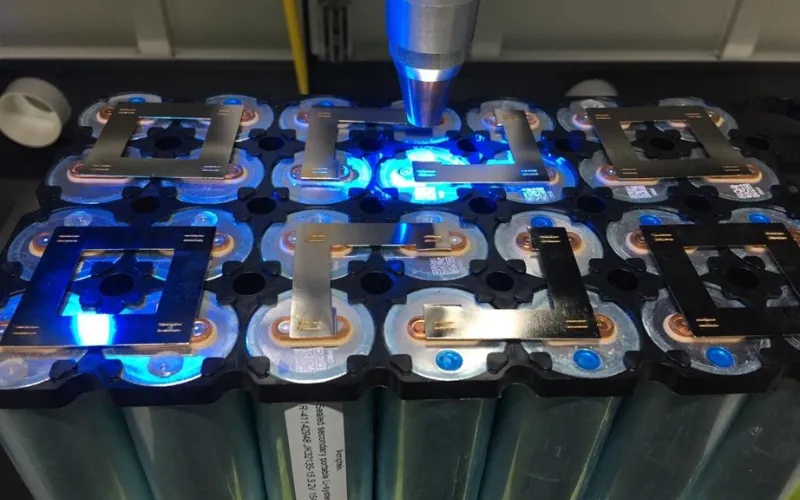
Types of Battery Energy Storage Systems
A few types of energy storage batteries are available, grouped by their storage chemistries. These are lithium-ion, lead acid, nickel cadmium, sodium-sulfur, and flow batteries.
Lithium Ion Battery Storage System
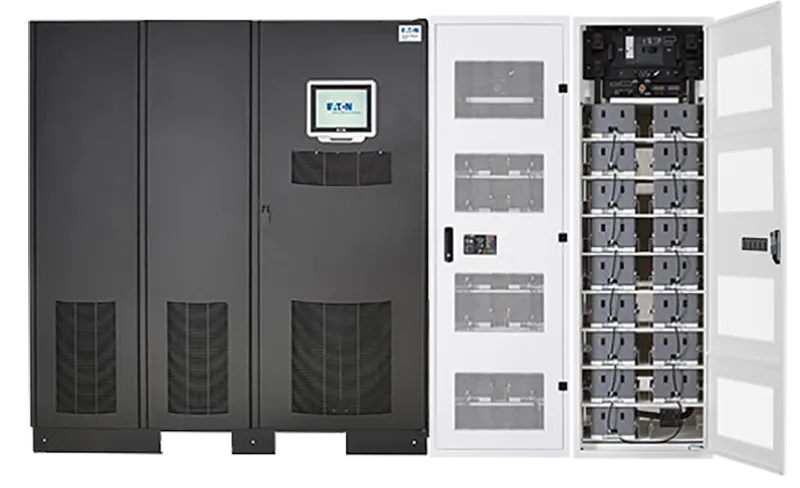
As its name implies, the lithium-ion battery uses lithium salts for the electrolyte. The cathode electrode is a lithium compound, while the anode is typically graphite.
Cathode options vary from lithium iron phosphate and lithium cobalt oxide to lithium manganese oxide—the manganese oxide-based type offers better characteristics and finds preferred use in specialized applications.
Although a more expensive option, the LI-ion is one of the most used BESS types, with diverse uses ranging from homes to commercial and industrial sectors.
Advantages
Light in weight
Smaller than other types of storage batteries
High efficiency (up to 95%)
Charges quickly
High energy capacity
High depth of discharge that can be up to 90% of total capacity
Lasts a long time (5-30 years, depending on the cathode type)
Applications
Used in renewable energy storage systems
Electric vehicles (EVs)
Various consumer electronics (mobile phones, laptops, etc.)
Portable power tools
Lead Acid Battery Storage System
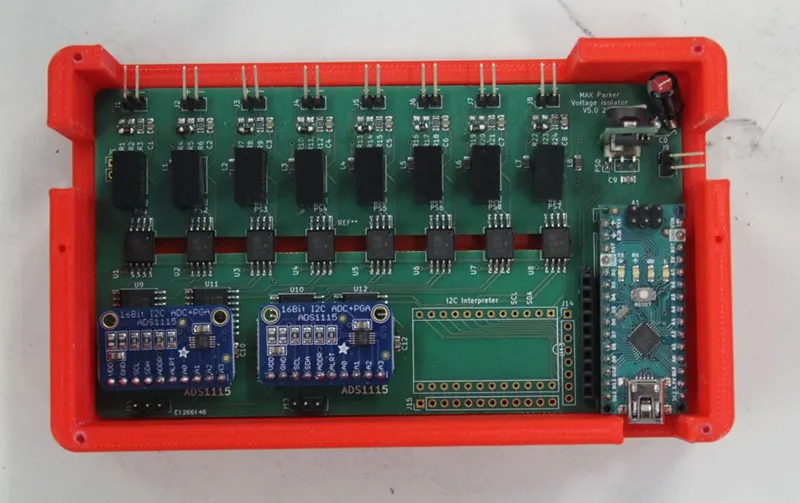
These BESS systems use batteries consisting of lead electrodes and sulfuric acid (H2SO4) as the electrolyte. The typical lead acid-based BESS lasts between 5 and 10 years but requires regular maintenance over its lifetime.
Lead acid storage batteries are also less efficient than the Li-ion types (about 85%) and have a low DOD of around 50%. They also need periodic charging when not in use for extended periods to maintain them.
On the upside, these storage batteries provide several benefits, including being cost-effective and producing higher currents without damage.
Advantages
Cost-effective
Safe and reliable
Can provide high short-lived currents
Offers a broad range of operating temperatures
Applications
Solar storage systems
For car and other vehicle starters
Uninterruptible power supply units (UPS)
Nickel Cadmium Battery Storage System
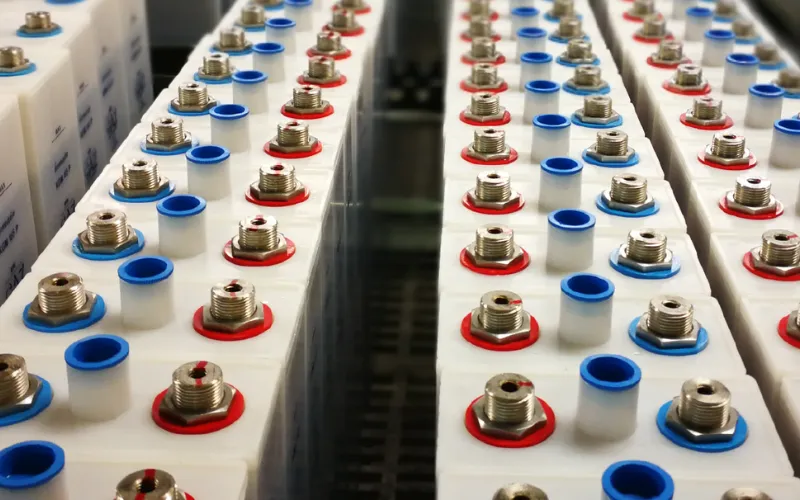
Nickel-cadmium battery storage has a nickel oxide anode with a nickel hydroxide separator. The cathode is cadmium metal, and the electrolyte is potassium hydroxide, an alkaline.
It’s good to note that, apart from the cadmium type, a nickel-based storage battery can be a hydride type. The nickel hydride battery uses a hydride (an alloy that can absorb hydrogen) for the negative electrode in place of cadmium.
The hydride type of the nickel-based types of storage batteries offer better properties, which include higher energy density and environmental friendliness
Advantages
Can withstand a range of temperature levels
High reliability
Charges quickly
High DOD, or depth of discharge
Long lifespan
Applications
Renewable energy systems
Emergency or backup lighting systems
Portable power tools and other devices
Sodium-Sulfur Battery Storage System
These battery storage systems use molten sodium for the cathode and liquid sulfur for the anode or negative electrode. The electrolyte is sodium alumina, which must melt to allow ions to move between the electrodes.
Because it uses liquid materials, this battery operates at higher temperatures above 300 degrees Celsius and includes heaters to liquefy the solid electrolyte.
The energy density of sodium-sulfur BESS systems is comparable to that of Li-ion batteries, except they have a shorter lifespan and require high heat levels to liquefy the solid sodium electrolyte.
Advantages
High energy density
High-efficiency level of up to 90%
A high DOD (80%)
Uses low-cost materials
A long lifespan of up to 10 years
Applications
As backup power systems for data centers and similar applications
In renewable energy installations
In the power distribution systems to stabilize power output
Flow Battery Storage System
Two tanks contain the electrolyte in a flow battery storage system, with an ion exchange membrane separating them to facilitate the reaction that stores energy.
During charging, the current oxidizes the chemical compounds in one container and reduces those of the other. The reactions convert the charging current into stored chemical energy.
Various technologies are available for flow BESS types based on the chemicals used for the electrolyte. It can be a vanadium or zinc-bromine ion solution. The battery can also be an iron-chromium type.
Advantages
Long service life of around 20 years (about 10,000 charging cycles)
Safer than other BESS types (uses non-flammable and non-toxic materials)
A relatively high efficiency level (around 80%)
High energy storage capacity
Short charging time
Highly scalable by increasing the electrolyte
Applications
Backup or emergency storage systems
Grid power stabilization
Renewable energy systems
In electric vehicles
Conclusion
In the present world, where renewable power is the norm, storage batteries are becoming increasingly critical. Today, you can choose from various battery storage systems based on lithium-ion and lead-acid to sodium-sulfur and flow batteries. As this guide has outlined, each of these BESS types has its benefits, and your choice will depend on the needs of your project.

